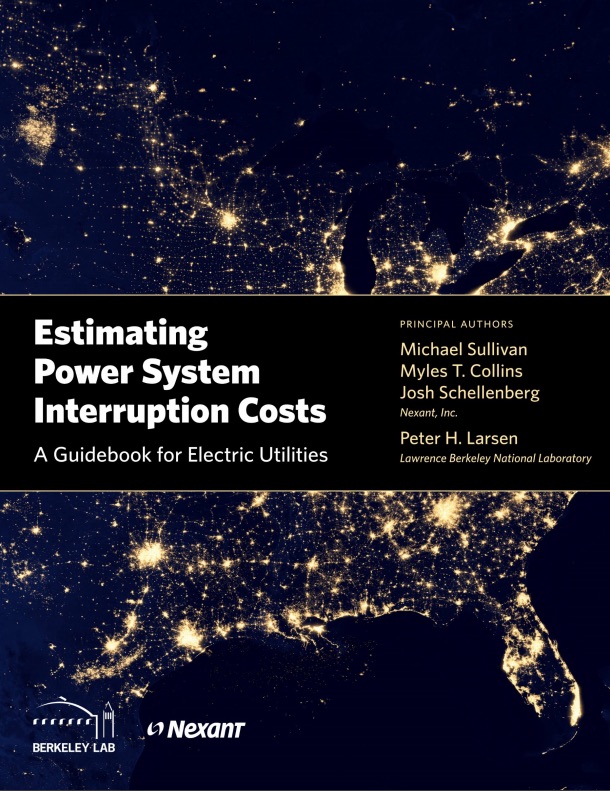A newly updated online tool and guidebook will help utilities measure the cost and impact of power outages, a key strategic consideration as the nation works to modernize the electricity system, and especially important now during hot summer months that can strain the power grid.
The Department of Energy’s Lawrence Berkeley National Laboratory (Berkeley Lab) and industry partner Nexant, Inc. recently released:
- Estimating Power System Interruption Costs: A Guidebook for Electric Utilities
- Interruption Cost Estimate Calculator 2.0: icecalculator.com
 “The over-arching goal of these two projects is to help stakeholders estimate and consider the economic benefits of proposed investments in power system reliability and resilience,” said Peter Larsen, Deputy Group Leader of the Electricity Markets and Policy Group at Berkeley Lab.
“The over-arching goal of these two projects is to help stakeholders estimate and consider the economic benefits of proposed investments in power system reliability and resilience,” said Peter Larsen, Deputy Group Leader of the Electricity Markets and Policy Group at Berkeley Lab.
The guidebook updates an older reference manual that first set forth standard procedures for measuring electric utility customer interruption costs using generally accepted surveying techniques.
The updated and redesigned calculator, first released in 2011, is an online tool designed for electric reliability planners at utilities, government organizations, and other entities interested in estimating interruption costs and the benefits associated with reliability improvements.
Understanding customer power interruption costs
Utilities regularly improve their infrastructure and operating protocols to maintain or enhance the reliability and resilience of the electric grid. Customer interruption costs (CIC) estimates are useful in assessing and monetizing the economic benefits customers receive from these improvements.
This guidebook for electric utilities explains how to conduct CIC studies and describes commonly used, value-based planning methods. The guidebook is intended to serve as a reference for utility personnel, policymakers, and experts in survey design and administration who may be planning to implement CIC studies. It brings the utility industry up-to-date using modern survey technologies, practices, and data analytics to estimate CICs and, ultimately, use the estimates to address both traditional and emerging electric utility planning needs.
Reporting customer power interruption costs
The ICE Calculator provides notable benefits – there are few, if any, publicly accessible tools allowing users to estimate interruption costs for utility customers. The tool allows users to estimate the cost of grid interruptions (such as brownouts or blackouts) and estimate the value of an investment before it’s made.
“Utilities are increasingly focused on improving the customer relationship,” said Josh Schellenberg, Vice President of Advanced Analytics at Nexant. “The Guidebook and ICE Calculator align with this objective by providing state-of-the-art guidance and tools for assessing the value that customers receive from a wide variety of investments ranging from everyday tree-trimming activities to advanced smart grid applications.”
Nexant is a San Francisco-based company with staff who are experts in grid reliability and estimating the costs of power interruptions. They were pioneers in the design and administration of surveys to utility customers to elicit the costs of power outages.
The guidebook and online tool were funded by the Transmission Planning and Technical Assistance Division of DOE’s Office of Electricity.
# # #
Lawrence Berkeley National Laboratory addresses the world’s most urgent scientific challenges by advancing sustainable energy, protecting human health, creating new materials, and revealing the origin and fate of the universe. Founded in 1931, Berkeley Lab’s scientific expertise has been recognized with 13 Nobel Prizes. The University of California manages Berkeley Lab for the U.S. Department of Energy’s Office of Science. For more, visit www.lbl.gov.
DOE’s Office of Science is the single largest supporter of basic research in the physical sciences in the United States, and is working to address some of the most pressing challenges of our time. For more information, please visit science.energy.gov.
– written by Energy Technologies Area